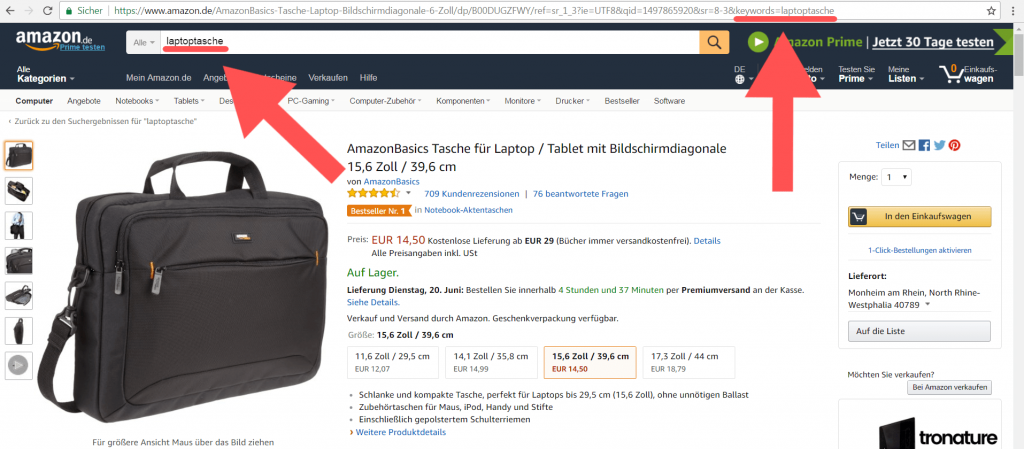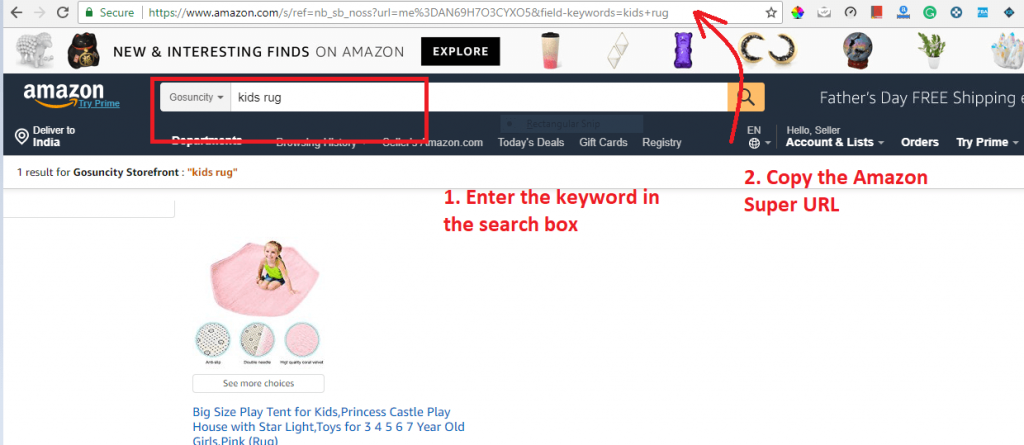As Amazon continues to grow, sellers must look for new strategies for selling their products and services. Luckily, Amazon facilitates one of the strongest affiliate programs for online sellers, which is essential if you want to get your make big bucks in this marketplace.
However, just being part of the affiliate program doesn’t guarantee an advantage over other sellers; you have to find ways to make your products stand out!
If you are researching strategies to rank higher on Amazon, you may come across super URLs. According to many sellers adding a super URL to your content can strengthen your social media, SEO, and business in general.
In this article, we will unpack the uses, benefits, and legality of Amazon super URLs for Amazon sellers.
Why Super URLs?
Many entrepreneurs embrace social media as an effective and legitimate way to build a business. Business owners often work to ensure that their product listing is mentioned through backlinks on other websites and product reviews as well.
While strong SEO will contribute to the growth of an online business, sometimes an expansive social media presence and multiple backlinks to your product listing will not yield the customer’s traffic.
Anyone with an online business and some basic knowledge of SEO understands the importance of rankings. You want your business to pop up first when someone googles keywords that are relevant to your product. The Amazon algorithm works similarly.
When a customer searches popular keywords, you will want the algorithm to rank your product listing higher than your competitors’ product listings. The higher you rank, the faster your potential customers can find you as they browse through Amazon. Before Super URLs every seller was looking into how to get the Amazon Choice badge which we covered a while ago. Moving forward.
This is where super URL’s come into play- they link directly to a product listing while appearing like an organic search.
Get to Know the Amazon Algorithm
Before we dive into super URLs, let’s gain a little more background knowledge on the way the Amazon algorithm functions:
Amazon ranks products based on how relevant and popular they appear. The algorithm does this by examining a customer’s Amazon search as well as Amazon URLs:
- What time did the customer access a product listing?
- Where did the URL for Amazon come from?
- What keywords did they use?
- Was the URL for Amazon a link listed through another site?
The Amazon algorithm collects the answers to these questions.
If the Amazon algorithm detects that a high volume of sales occurs for one product through customers repeatedly using specific keywords, it will rank that product higher for popular search terms. Customers that use specific keywords will see the more popular products, click on one, and find themselves on the storefront URL of that product.
Here’s an example of the algorithm at work: Imagine you are a customer that wants to buy purple curtains. You log into https www.amazon.com and type in the search term, “purple curtains.” You see a wide variety of options, and you pick the first one that you like. You land on that URL storefront and buy the curtains. That seller makes a sale.
This process occurs because the Amazon algorithm shows the brands with the most sales from that specific search term as well as products that received the most clicks from unpaid search terms, AKA organic search terms.
Amazon favors organic traffic, meaning sales occur when a customer searches keywords in a search engine and finds your product organically rather than through a sponsored ad. For example, if your site has excellent SEO and ranks highly in Google, a customer may easily find your product’s link.
Also note: if you are a seller for Amazon, the algorithm will rank your page and storefront URL higher when many customers buy your products from organic searches rather than from searching the specific name of your brand in Amazon.
What is the Amazon Super URL?

It is no secret that Amazon product distribution is vast. A product could be duplicated and improved by a variety of sellers looking to beat out the competition. And let’s not forget, the search algorithm is unforgiving. Because the online pool of sellers is overflowing, search results matter.
This is where Amazon super URLs come in.
A super URL is more powerful than a regular URL because it will link directly to your Amazon product. The URL makes the algorithm think that a customer visited a product link because of an organic search. If the algorithm detects that people are drawn to your product from a more general search term, you will rank higher and more customers will visit your page first.
How Do Super URLs Work?
Now that we know the benefits of using an Amazon super URL, let’s unpack how it works:
Super URLs prompt Amazon to ascribe the same ranking power to sales from external traffic to organic traffic. Sellers who sell on Amazon want to adjust their rankings in favor of more popular search terms and keywords. Amazon super URLs help drive sales to their product through keywords and unique timestamps.
You may be wondering what timestamp is in the context of a URL:
When you log into https www.amazon.com and click on a page, you will see a long URL that looks like gibberish.
Although the lettering and numbering may look confusing, a URL contains information that helps the algorithm learn the dates a page was accessed along with the keywords that lead the customer to that product link. As we know, if many customers buy a product from https www.amazon.com after searching particular keywords, rankings for those keywords will increase.
An Amazon super URL replicates some of the parameters that give the algorithm information about where a click comes from. Super URLs track external traffic from sources like Google, Facebook, and Instagram through a unique link with a specific timestamp and the desired keyword. Each external click is then treated as a new search by the Amazon ranking algorithm.
If you’re a little confused, that’s okay. Not every seller knows the difference between an ie utf8 and a utf8 qid; you’re an entrepreneur, not a coder.
Put simply, a Super URL directly links a customer to an Amazon product listing, while making the algorithm think the click came from an organic search. It is a 2 step system that meets both traffic and the keywords requirements necessary for high rankings.
Creating a Super URL

To create an effective super URL, you can use Helium 10 Gems super URL generator to make them for you. We recommend using a service as the Amazon algorithm has become increasingly advanced.
Many argue that unless the super URL is extremely advanced, Amazon can detect it.
Additionally, a company’s services will help you avoid creating a static super URL link ( a link that the algorithm omits because when clicked, it converts into “duplicates” for each sale).
A service will also create a Super URL Generator, a tool that will ensure each link is unique and generates many links at once.
Super URL Amazon Ethics
While Amazon’s terms and services do not explicitly mention super URLs, they do warn against attempting to manipulate the algorithm. It is up to interpretation whether a super URL falls under this category.
Amazon’s advanced algorithm technology will likely have the capability to detect if a link is manufactured. That is why we recommend hiring a service. A less sophisticated URL could alert Amazon.
You can easily access Amazon’s terms and services if you log onto your account at https www.amazon.com.
An Alternative to the Super URL: Learn to Create a 2 Step URL
As Amazon’s technology advances, their algorithm can more easily detect sales coming from super URLs. If you are feeling unsure about creating an Amazon super URL on your own, you can create a 2 step URL that will function similarly but lower the risk of alerting Amazon.
A 2 step URL is as simple as its title suggests: the link takes the customer to your product page in two steps. While a super URL brings the customer directly to your page, a 2 step URL directs the customer to a search page with specific keywords already embedded.
For example, if a customer wanted a nonstick pan, a step URL would bring them to a search page with the keyword “nonstick pan” already inserted.
Final Thoughts
There’s still a lot of debate about whether Amazon super URLs are violations of the company’s terms of use. We recommend the 2 step URL or the search find buy method as an alternative to the super URL. This kind of URL involves less risk and abides more closely by Amazon’s policies.
It also functions similarly to a super URL in that it will bring your potential customers to your Amazon URL in a more direct manner than if they typed in keywords independently.
Remember that if you add 2 step URLs to your business tool kit, continue to keep improving your SEO and social media presence. All strategies will contribute to the health and wellness of your business.





